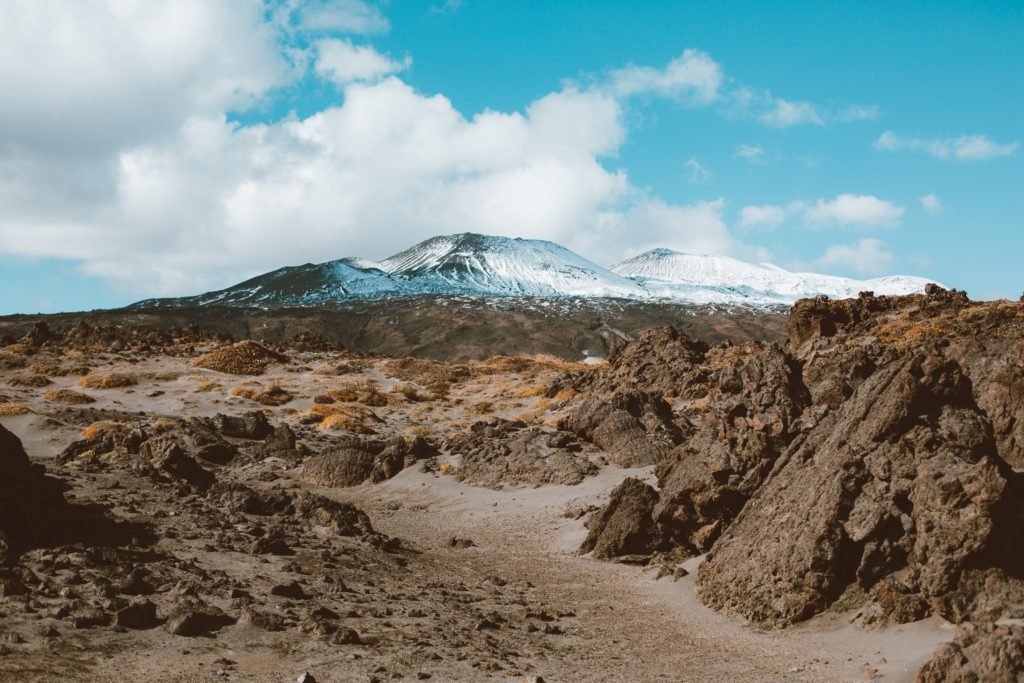Abstract: The land use and land cover (LULC) pattern of an area are determined by natural process and human utilization over time and space. Human interventions of mining activities and its surrounding area cause changes in land cover and land use patterns. The land use and land cover changes in the Madayipara area of Kannur district, Kerala State, India, which contains the area of clay mining has been studied. The spatial distribution and temporal changes of different land use and land cover classes were attempted. Landsat-5 Thematic Mapper and Sentinel-2 satellite imageries were used to study the changes in vegetation patterns, land modification, and changes in water bodies. A distinct increase in area of the mining area was not visible, as the excavation mostly happened vertically in the same areal coverage. This study is helpful in the better management of environmental sustainability.
Keywords: Mining Area; Land cover; Land use; Environment.
Introduction: Landcover indicates the physical appearance of the land surface, such as grasslands, forest, bare soil, exposed rock, developed land. Whereas, land use indicates the purpose for which the land is used, like residential, commercial, agricultural, managed forest, and rangeland. Together land use and land cover information suggest specific characteristics of the land surface, such as imperviousness, solar reflectivity, vegetation type, and building morphology, this can be incorporated into environmental models as distributed or bulk parameterizations (Burian et al., 2002). Since the land is changing by natural process and human interferences, the information on land use and land cover is important for the planning and management of resources needed for human welfare (Opeyemi, 2006). Remote sensing data plays a major role in mapping earth surface features (Mohammed-Aslam et. al, 2006; Reis, 2008; Mohammed-Aslam et. al, 2010). It is used as a powerful tool to monitor the Earth’s surface, particularly in producing land use and land cover (LULC) classifications (Christoph et al., 2016). Remotely sensed data are useful for the mapping of land use and land cover (Jeffrey and Jonathan, 2003). The easy availability of coarse spatial resolution satellites is useful in the land use and land cover classification for environmental studies. The Sentinel-2 satellite by ESA (European Space Agency) is ideal for classification of land use and land cover as it is having 13 high-quality radiometric bands (Borràs, et al., 2017). Sentinel-2 is a satellite owned by ESA, provides a long-range of electromagnetic information with wide coverage and good spatial and temporal resolution (Zheng et al., 2017). Recent studies using Sentinel satellites (Gordana, 2018; Rao and Kumar, 2017; Steinhausen et al., 2018; Nicola et al., 2017) for land use and land cover mapping have demonstrated that Sentinel satellite imageries are highly suitable for land use and land cover mapping. Several land use and land cover studies were conducted using Landsat 5 satellite and it was found as suitable data for land use and land cover analysis study. The study conducted by Abdel Rahman in 1996 to map the LULC using Landsat 5 for East Nile Delta, Egypt, showed the capability of Landsat 5 data for land use and land cover classification. Landsat 5 Thematic Mapper for the year 2000 and Sentinel data for 2017 respectively were used in this study. An attempt has been made to map the land use and land cover of the present study area using Sentinel-2 and Landsat satellite images.
Since the land use and land cover classification provides the base for many applications, the selection of appropriate classification algorithm and accuracy is very important (Ustuner et al., 2015) in this process. Supervised, unsupervised, hybrid classification, maximum likelihood classifier, artificial neural network classifier, object-based image analysis, and supportive vector machine are the techniques used for classification purposes (Abburu and Golla, 2015). Among the existing satellite image classification techniques, Supportive Vector Machine (SVM) classification was highly used in recent times due to optimal separating hyperplane between classes (Bahari et al., 2014). SVM is one of the best superior machine learning algorithms for the classification of high dimensional data (Huang et al., 2002). This algorithm was widely adopted for remote sensing data analysis. It is a nonparametric supervised classification algorithm that is proved to be a robust method used for pattern recognition (Sukawattanavijit and Chen, 2017). The use of the SVM algorithm is getting increased attraction due to the advantages it possesses (Martins et al., 2016). The result obtained from the SVM classification is relatively better than the maximum likelihood classifier (Taati et al., 2014). Therefore, keeping the advantages and accuracy of results, the SVM classification method has been followed in this study.
Methodology: Land use and land cover of the study area were generated using Sentinel-2 and Landsat -5 satellite imageries, acquired on 28th December 2017 and 21 January 2000 respectively. The sentinel image was downloaded from “scihub.copernicus.eu” and the Landsat-5 image was downloaded from “USGS Glovis” for free of cost. The Landsat-5 satellite bands 1, 2, 3, 4, 5, and 7 are having the same spatial resolution of 30m were considered for the classification LULC of the study area for the year 2000. The Sentinel satellites bands 2, 3, 4, and 8 are having the same spatial resolution of 10m were considered for the classification LULC for the year 2017. The downloaded satellite imageries were preprocessed before the classification. The land use and land cover identification were carried out using the Supportive Vector Machine (SVM) classifier technique in the ArcGIS environment. Totally five classes were chosen for classification as the study area is predominately covered by it, such as barren land, built-up land, mining land, vegetation and water bodies. To classify the satellite imagery using SVM technique it is necessary to create a signature file, hence, 75 samples for vegetation, 50 samples for built-up land, 40 samples for barren land, 15 samples for waterbodies and 10 samples for mining land were selected on satellite imagery, using the representative pixels. These signature files were used as input data to classify the entire imageries. The result of classification was subjected to an accuracy assessment to understand the precision of classified classes. Ground verification is conducted with the help of the Global Positioning System (GPS) to determine the accuracy of the classification results. The verified ground information is compared with the classification result of satellite image and error matrices are generated (Paliwal and Katiyar, 2015; Kim, 2016). The error matrices and Kappa coefficient are the standard way of assessing the accuracy of land use and land cover classification, generated by comparing classified land use and land cover samples with the information collected in the field using GPS (Adam et al, 2013). Therefore, in order to access the accuracy of land use and land cover classification of this study, a total of 150 samples were chosen which consist 20 samples for barren land, 40 samples for built-up land, 5 samples for mining land, 80 samples for vegetation and 5 samples for waterbodies respectively. The latitude and longitude of the selected samples were loaded in handheld GPS and field verification was carried out to compare the classification result with real-world situations. The comparison of collected satellite image information and ground information was analyzed using the error matrix. The error matrix is an array of information where classified classes are shown. The information in the columns as indicated by reference data or ground truth while the information in the rows was indicated by mapped classes of satellite images. It has numbers as the quantity of sample unit for any particular quantity arranged in rows and columns i.e. square matrix where columns represent the referencing data while row represents the classification data. It is useful in calculating the parameters like the producer’s accuracy, user’s accuracy, overall accuracy, and the kappa statistics (Nain and Kumar, 2016). The error matrix and kappa coefficient are predominantly used for land use and land cover classification derived from satellite image for accuracy determination, which is based on the comparison of ground truth against classified result by the classifier. (Upadhyay et al., 2015). Table 1 shows the error matrix of the study area.
By:
1MA Mohammed Aslam, 2Lalitha M., and 3B. Mahalingam 1Department of Geology, Central University of Karnataka, Kalaburagi (Karnataka), India 2Department of Geology, Government College, Kasaragod (Kerala), India 3Department of Geography, Central University of Karnataka, Kalaburagi, (Karnataka), India Email: maslam.in@gmail.com


Recommended Site https://lexurofield.com
explanation https://anthonyjosephartgallery.com/
weblink https://qorivencore.com/
the original source https://vallythros.com/
More Help https://boujiwater.com
подробнее здесь https://kra42at.cc
другие https://kra42at.cc/
Продолжение https://ros18.ru/catalog/zabory-i-ograzhdeniya/evroshtaketnik-stalkomplekt/shtaket-zabornyy-modern/
her comment is here https://brethunholm.com/
i loved this https://viewsfromtaiwan.com
next https://melodycrafthub.com
visit homepage https://meteora.luxe